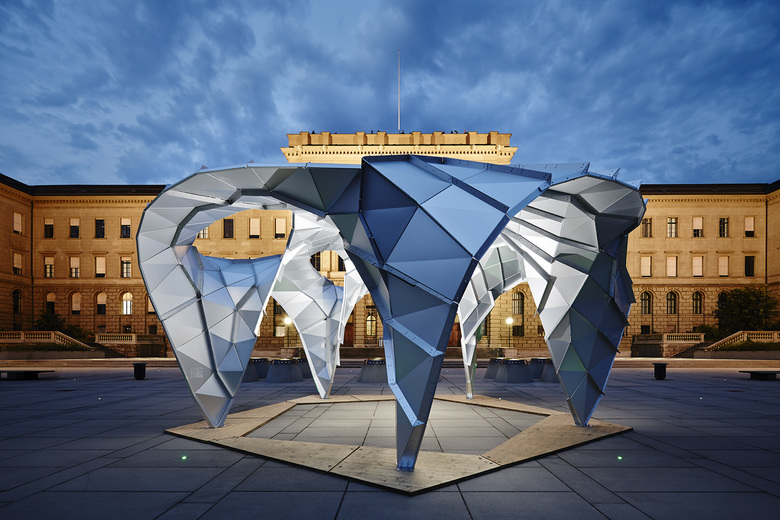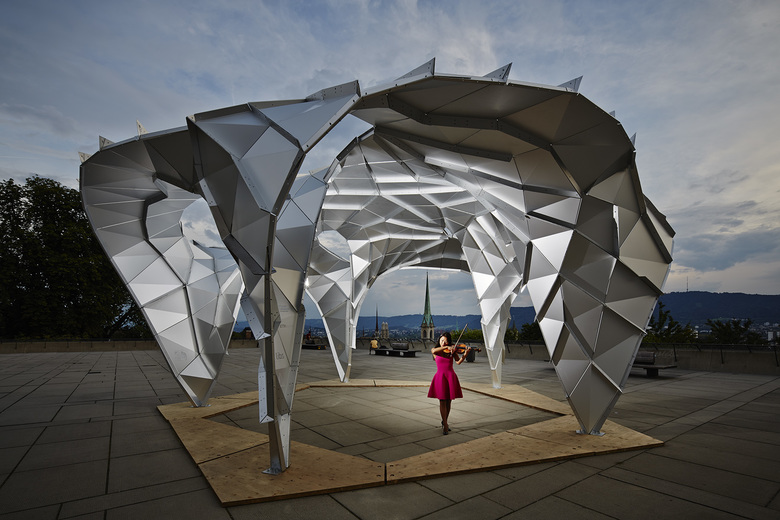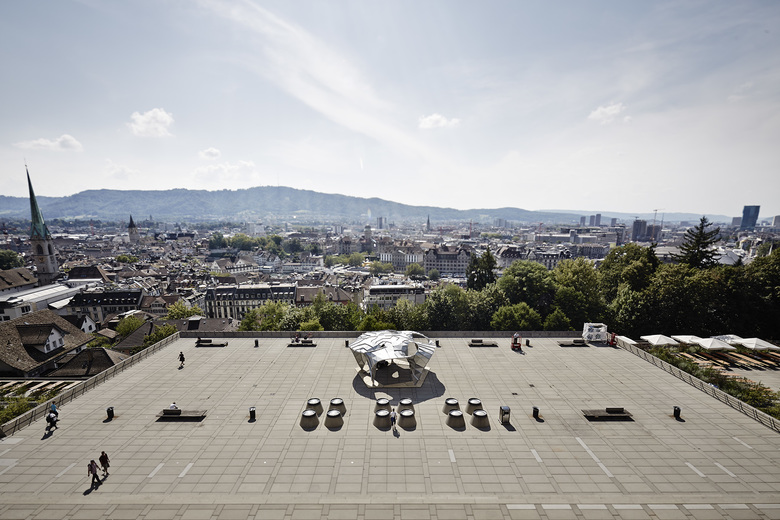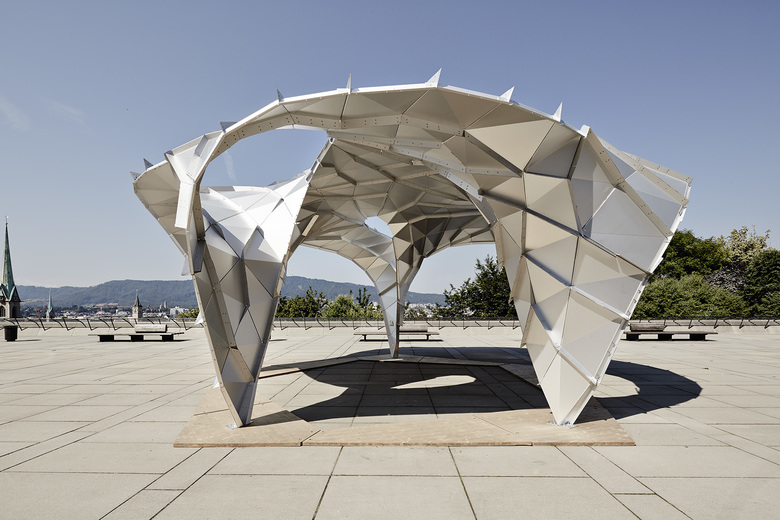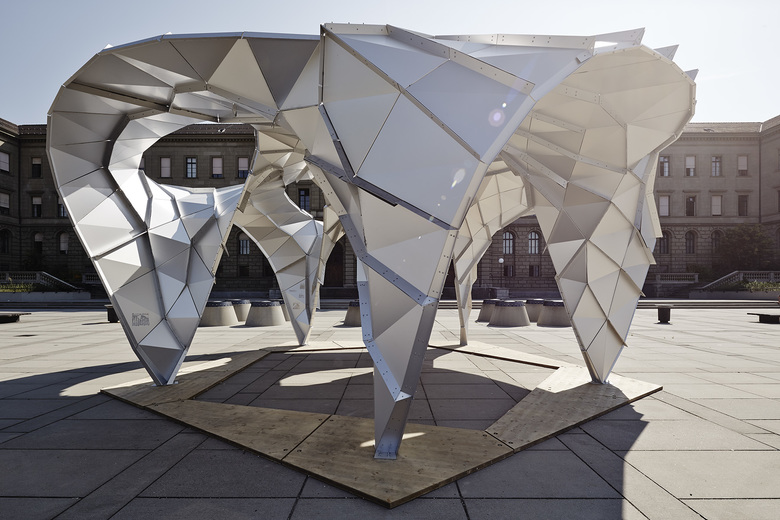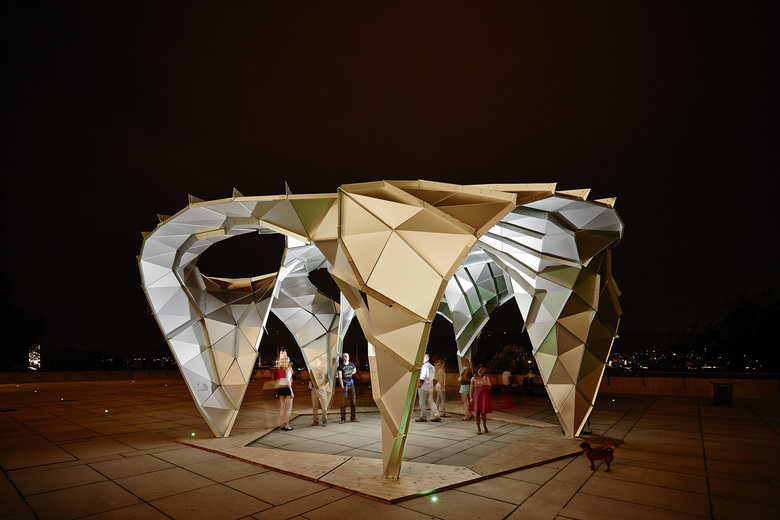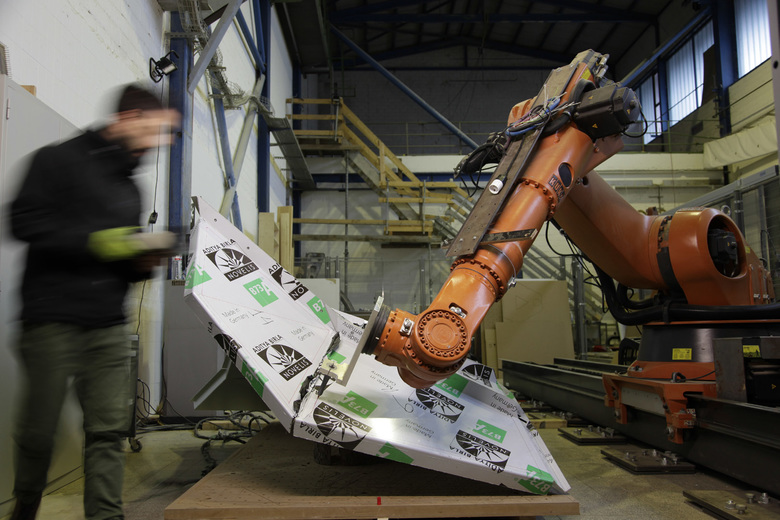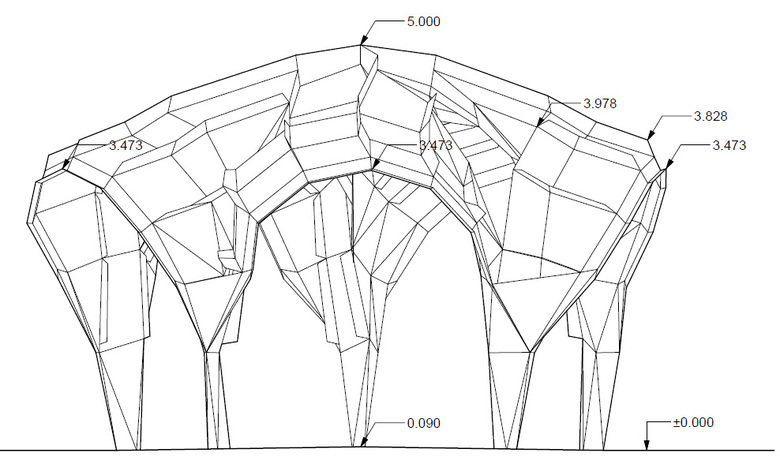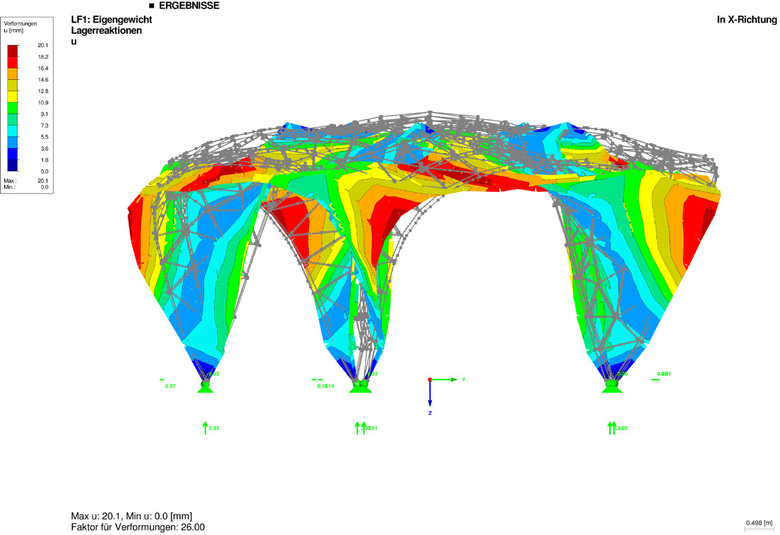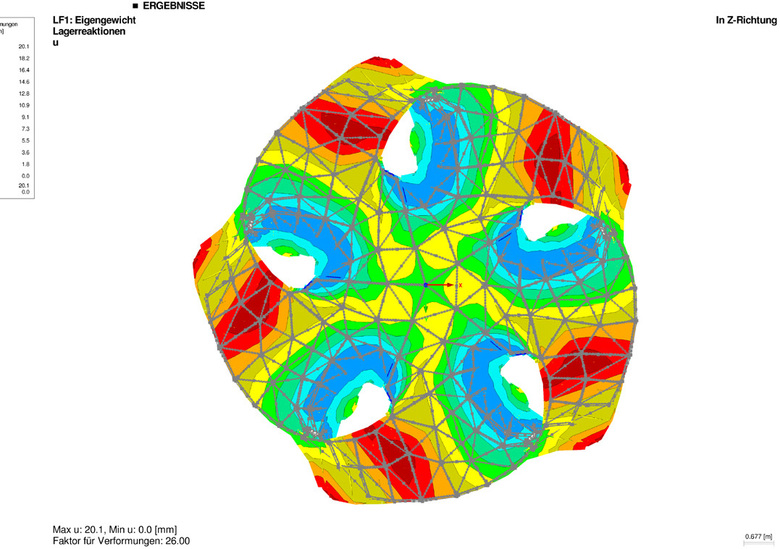Dimitry Demin
Rose Pavilion
The idea of Rose Pavilion derives from the free-standing constructions popular in the 19th and early 20th centuries.
This polygonal structure was designed for entertainment, for hosting performances given by artists and musicians. Rose Pavilion is a contemporary interpretation of such an attraction point in public space where people can gather together.
Pavilion, besides being the real architectural object, belogs to the virtual world as well. With the use of projection mapping technologies, it creates the network of spaces and enables the user to convey between them. The columns and domeare used as a screen for live shows to displace a person to another environment. The pavilion unfolds to be the aesthetical spatial object as well as it becomes a space-time machine
The form of the pavilion is influenced by the natural beauty of Rosaceae Rosa canina flower. These roses have a pentagonal symmetry and double curvature in their petals. Natural features have been translated through mathemathical rules into an aesthetically beautiful architectural form. The geometry of Rose pavilion is based on Calabi–Yau manifolds as the initial mathematic prototype of the design.
The structure of the pavilion is divided into five main load-bearing parts, merging harmoniously with each other: the dome and the columns. Curved metal sheets are welded together or connected by screws and rivets.
The pavilion has high performance compo- nents because of the automation of the de- sign cycle and manufacturing process. This is the result of architectural design being integrated with the use of robots in an innovative way which makes production purely mechanical.
Project: Dimitry Demin
ETH Zürich: Prof. Ludger Hovestadt
Achitectural team: Achilleas Xydis
Mathematical consultant: Denis Petrov
Engineering: Jürgen S. Wassink
Prototyping: Nan Jiang
